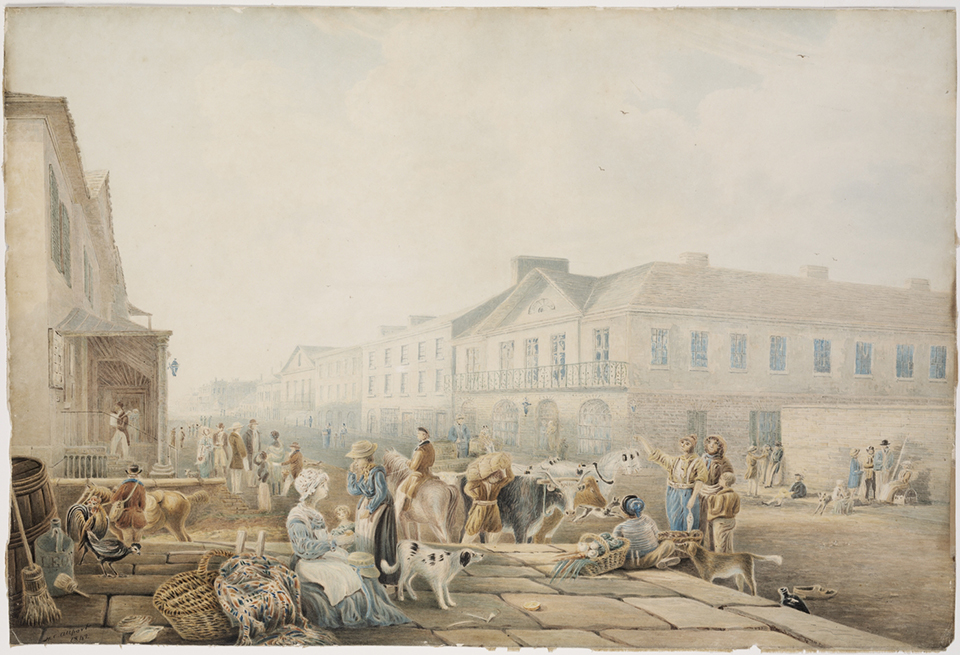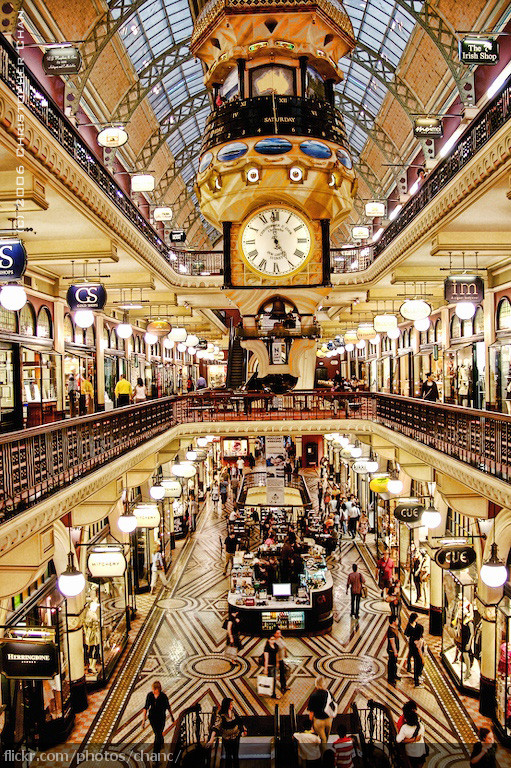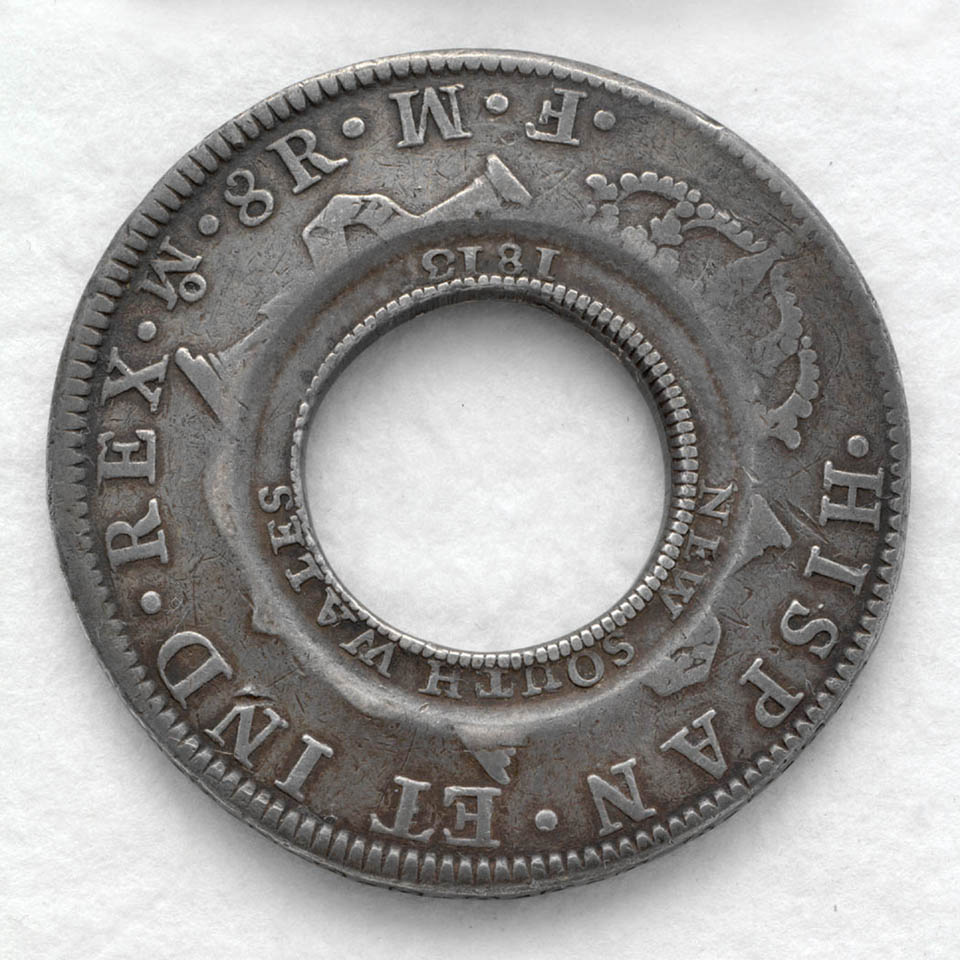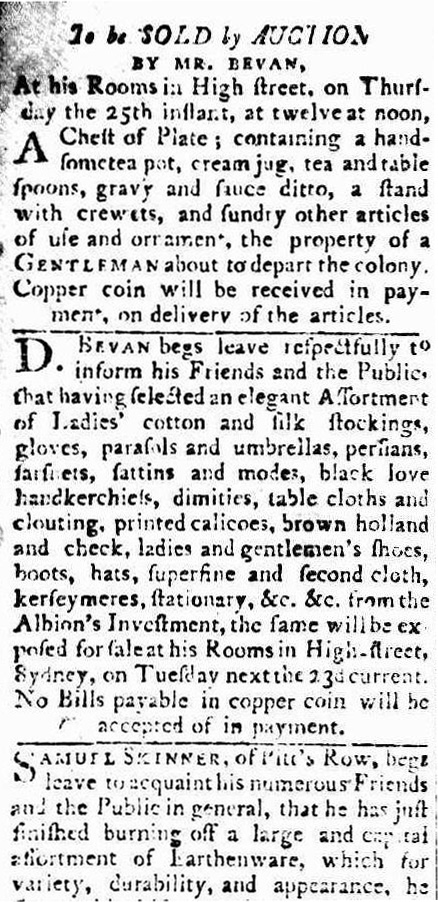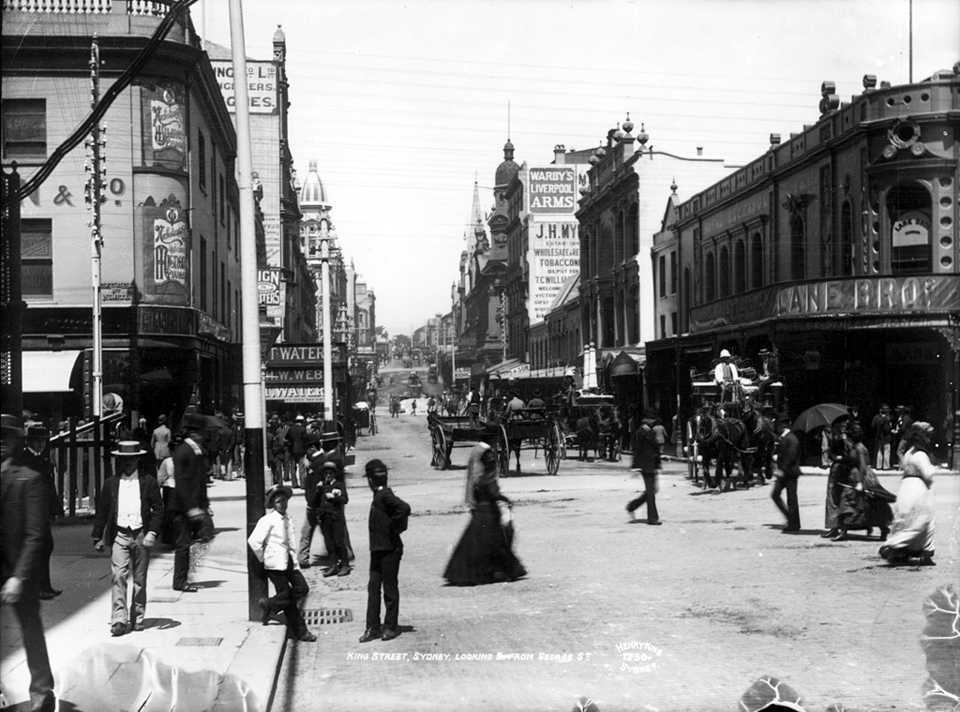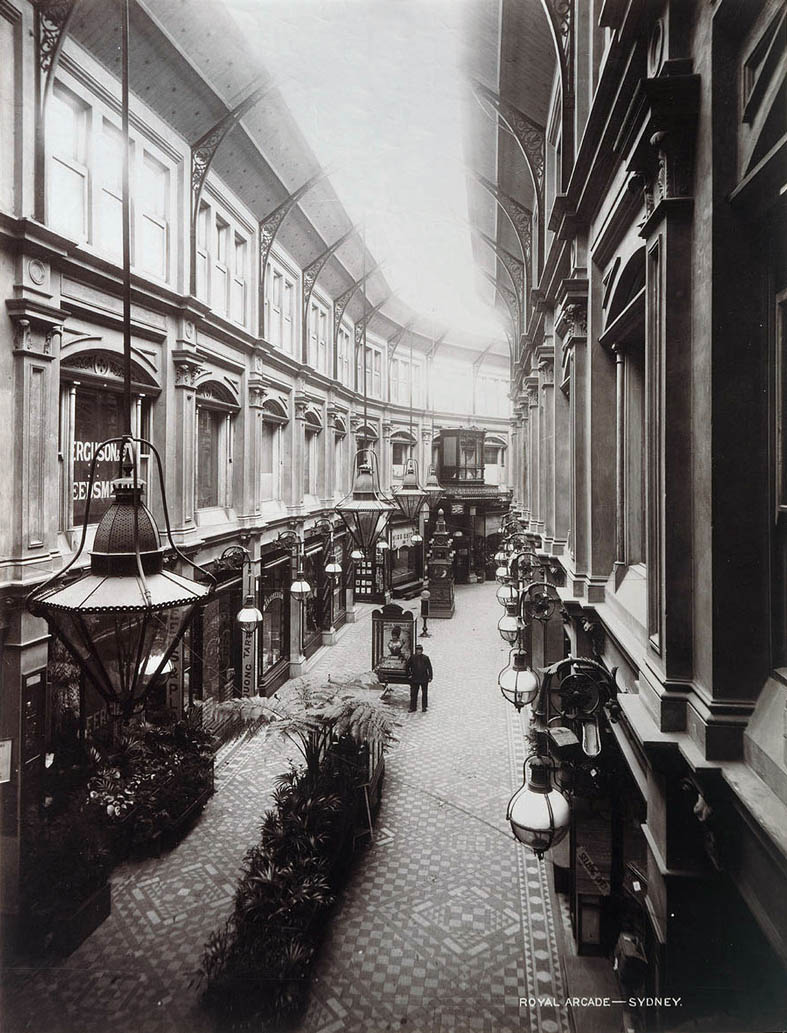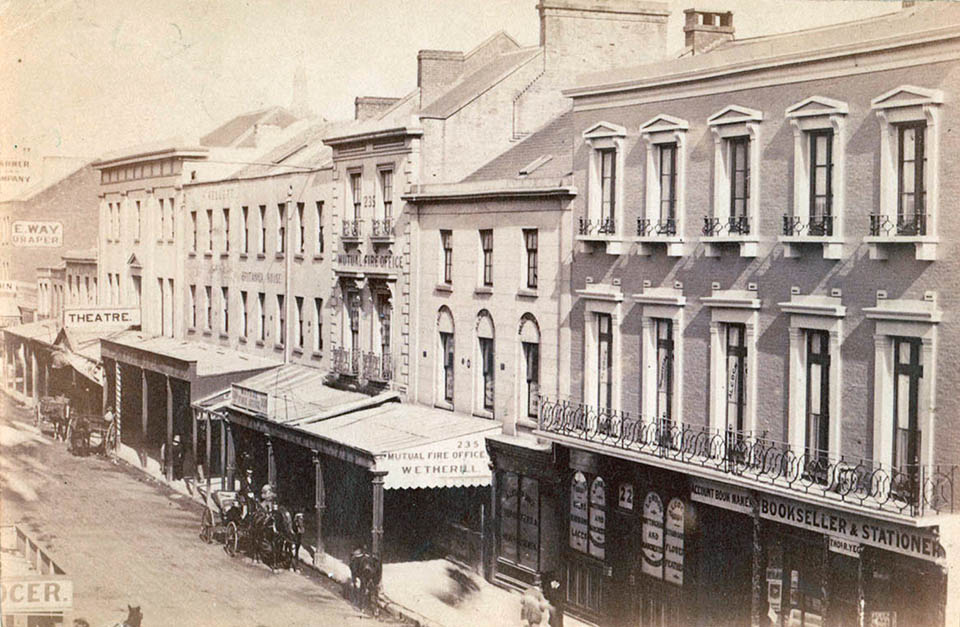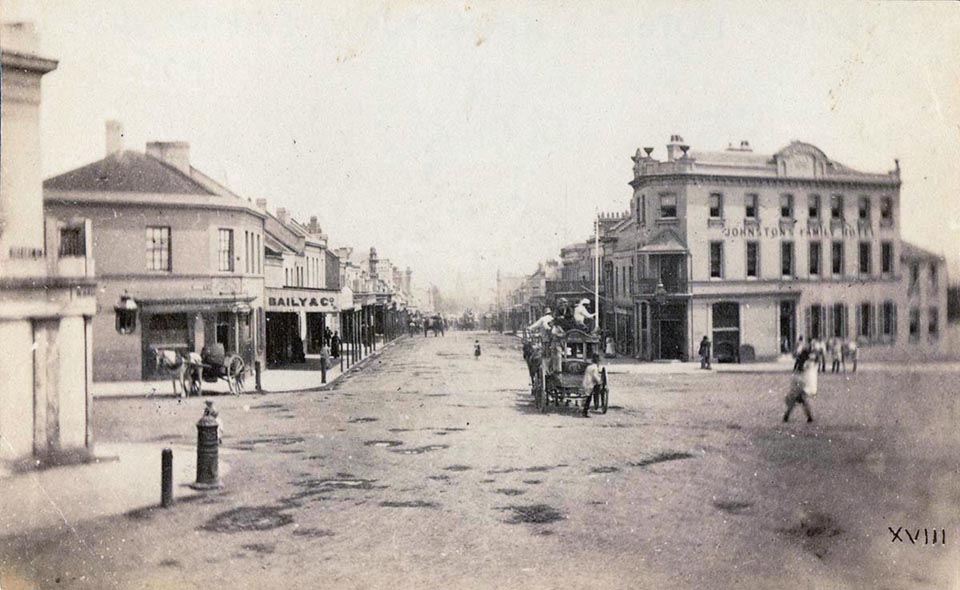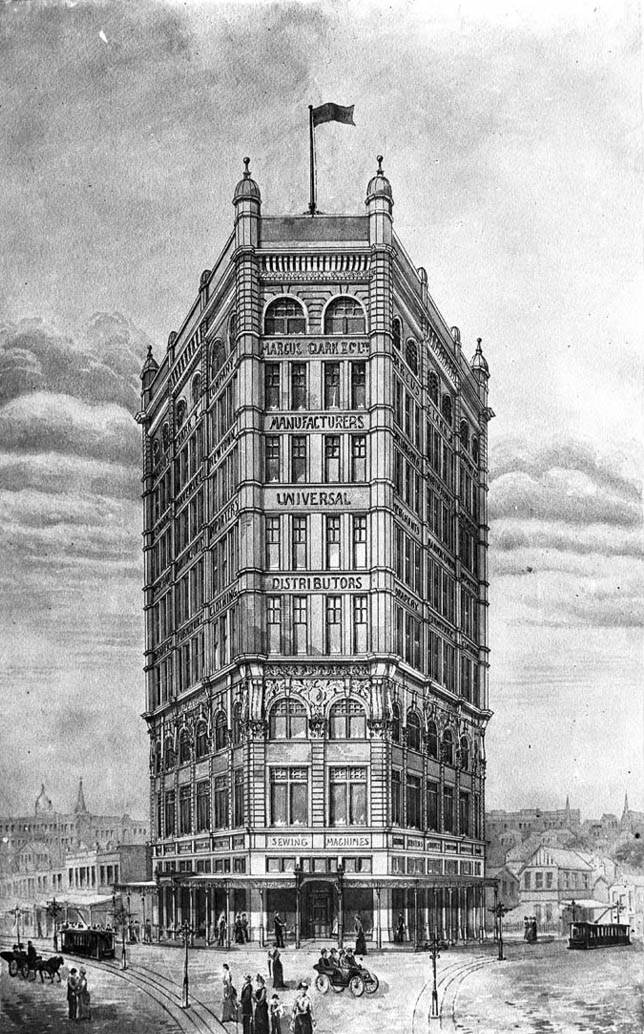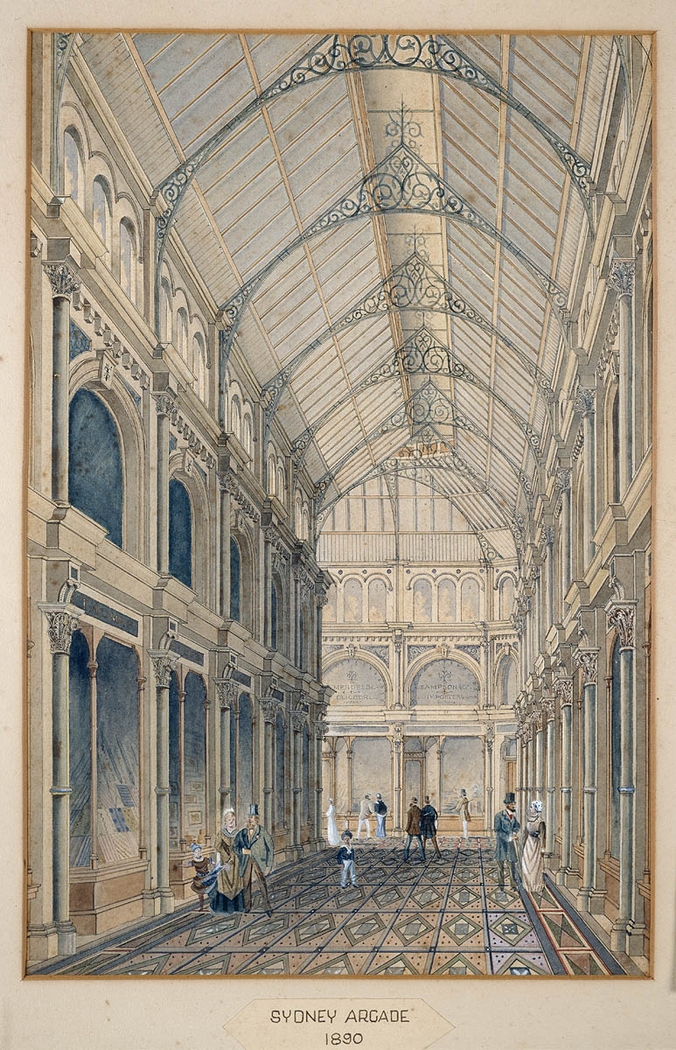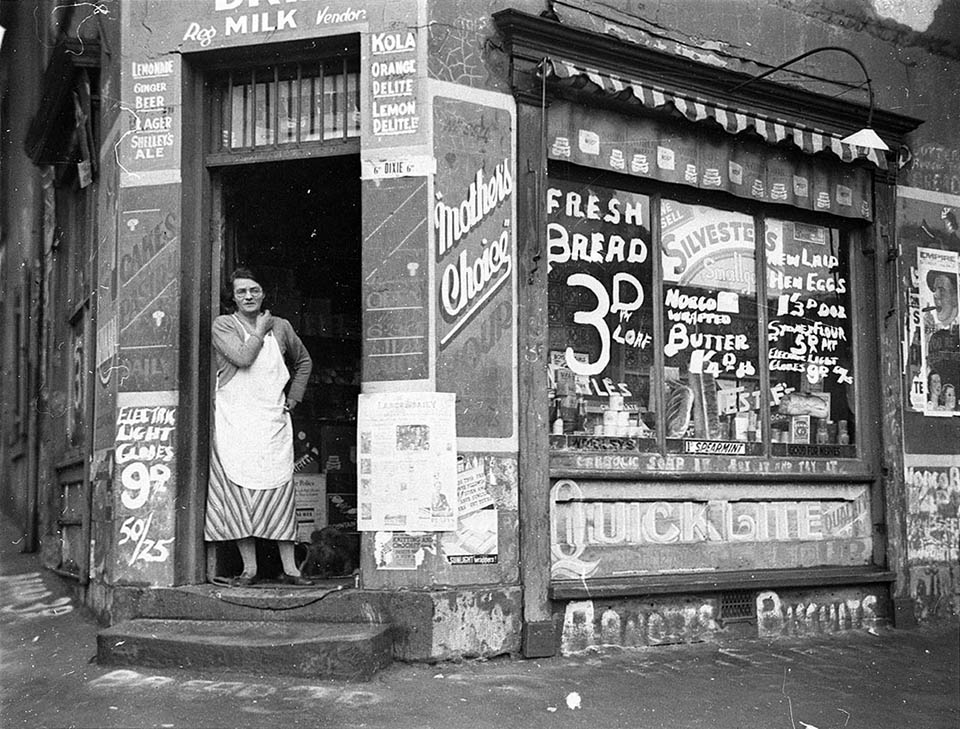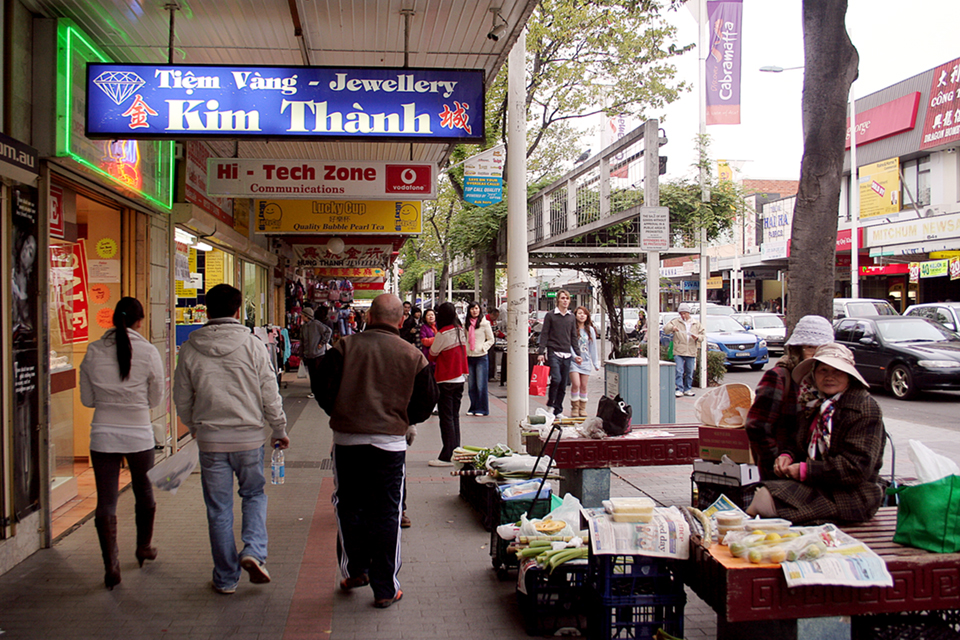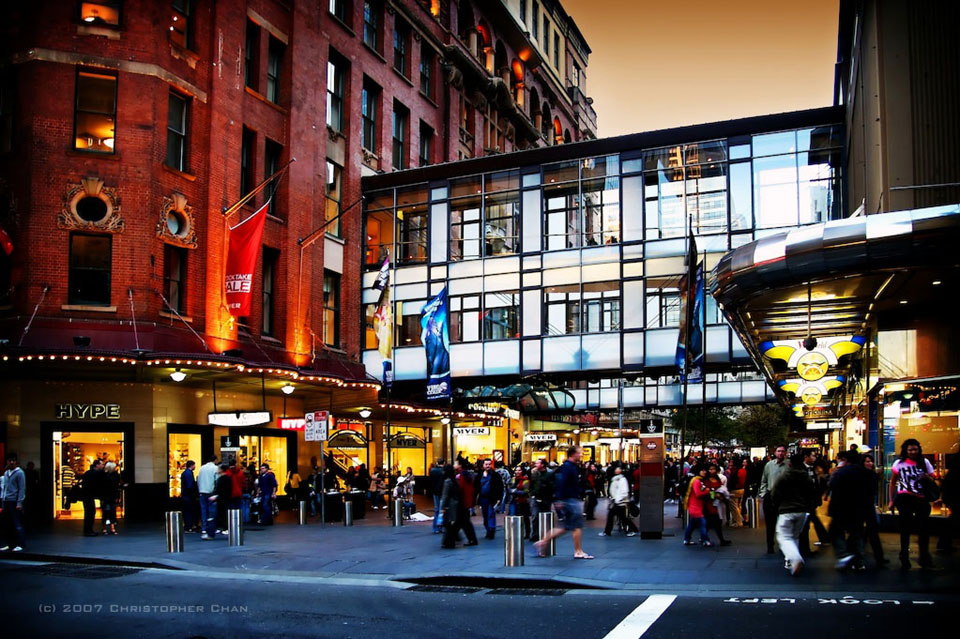The Dictionary of Sydney was archived in 2021.
Shopping
Citation
Persistent URL for this entry
To cite this entry in text
To cite this entry in a Wikipedia footnote citation
To cite this entry as a Wikipedia External link
Shopping
[media]As Bev Kingston points out in her definitive Basket, bag and trolley: a history of shopping in Australia, the word 'shopping … seems to have entered the English language in the middle of the eighteenth century', and was initially an activity closely identified with the women of the upper classes. Thus its spread was consequent on both the agricultural and industrial revolutions, and on an increasingly urbanised society. Although the settlement at Sydney Town was initially a prison colony, its nature changed and as it took on the trappings of a free society, shopping also developed here.
[media]Sydney's shopping habits and patterns have been influenced by a variety of factors, some obvious, others less so. Thus while the emergence of a money economy, the changing economic and social needs of the population, the growth of a middle class and the later development of the mass market, all meant that shopping became commonplace, the impact of multiculturalism, globalisation, a credit explosion and changing technologies, especially of transport, have also played their part.
Currency
Sydney was initially a gaol, and so all necessities of life were originally supplied from the government's Commissariat Stores, while all labour was provided by the convicts. Because of this, there seemed to be little need to consider establishing the colony's economy and supportive infrastructure: there was no provision for an adequate money supply, so necessary for the workings of a modern economy.
However, as Sydney developed as a major port city in the south Pacific with a growing free population, demand for, and the supply of, a variety of goods and services emerged, along with the need for an adequate medium of exchange. [media]Initially, this was somewhat ad hoc – sterling, always in short supply, supplemented by the Maria Theresa dollar and the 'holey dollar'. Soon a currency, bank notes and bills of exchange provided the necessary lubricants for a capitalist economy.
The first retailers
But even in such unpromising conditions, some people had recognised the need for, and possibilities inherent in, private retail activity. The emergence of a consumer society was not long in coming. And perhaps as a portent to the future, grog – in this case rum – was a product that induced early retail trade, although from a monopoly supplier.
In the early decades, such necessities as wood, coal, flour, sugar were often ordered in bulk from a warehouse or merchant, while basic foodstuffs – milk, and butter and cream, and eggs – often came from a local cow or neighbouring farm, and there were dairies and small farms in the city till well into the twentieth century. Fruit and vegetables, usually delivered by hawkers and itinerant salesmen, could come from nearby market gardens, many of which also continued to be located in the city.
Reflecting the low level of manufacturing or processing in the colony, early retail trade depended heavily on imports. Merchants often listed what ship their goods had come in on. [media]Advertisements in the Sydney Gazette were initially for auction sales of a ship's goods, although by 1806 there were more retail advertisements. In the early decades, many of the 'upper classes' sent to established firms in England for their requisites – a form of shopping by proxy.
[media]Until well into the second half of the nineteenth century, Sydney was like most towns and small cities of the period, in that it was a walking city, so shops, when they gradually emerged, were usually within the environs of the administrative and residential areas of the city.
The early shops were usually the front rooms of the residences of the shopkeepers themselves. In this, they were a continuation of the way retail trade had been carried on in cities since time immemorial. Stock varied widely, depending on the shopkeepers' views of what would sell.
Specialist retailers
By 1840 the city's population was mainly made up of free immigrants. Transportation had ceased in 1840 – by 1847, the convict population of Sydney accounted for only 3.2 per cent of the total population. [media]To cater for the tastes and pockets of this population, specialist retailers had begun to emerge. The many and varied stores of the Hordern family could trace their origins back to a stay-making business that Ann Hordern established in 1825; David Jones began selling haberdashery in 1838; Farmer's began in 1839; and George, Pitt and King streets were the best locations for 'quality' stores.
The gold rushes from 1851 had a major impact on Sydney. Large numbers of would-be miners poured in from overseas and the city's population grew from 39,000 in 1851 to 96,000 in 1861, despite the ongoing outflow to the goldfields. This stimulated retailing in many spheres, from provisioning the hopeful miners to feeding, clothing and entertaining the swelling population of the city.
By 1871, the population was nearly 138,000, and it supported a wide variety of retail establishments. [media]Such innovations as gas lighting had led to extended trading hours for shops that could afford it, and the introduction of plate glass saw elegant shop fronts with large windows set in cedar frames – as with Farmer's, from 1854.
There was, of course, a hierarchy. As Louisa Meredith noted in her Notes and Sketches of New South Wales (1844), shopkeepers
had a little code of their own, prescribing the proper distances to be observed between drapers and haberdashers, butchers and pastry cooks. [1]
Getting to the shops
[media]In the 1860s, Sydney's first successful attempt at an urban transport system was undertaken, with the opening of the Pitt Street horse-car tramway in December 1861. It ran from Circular Quay along Pitt Street to the old Redfern railway station (where the Devonshire Street tunnel now stands), passing through the city's main business district. But it was opposed by many of the Pitt Street shopkeepers, who thought that it would interfere with 'the carriage trade'.
When this service was closed on 31 December 1866, it was immediately replaced by a privately owned horse-drawn omnibus service, which remained Sydney's major form of urban transport until the early 1890s. This system provided Sydney with an extensive, if somewhat slow, land transport network. But it was mainly with the expansion of the railway network from the 1860s that suburbanisation occurred, and as the suburbs spread, so too did shops, although these local 'high street' shops were more likely to stock only the basics. Thus [media]Parramatta Road, King Street Newtown, and Oxford Street saw small-scale retail developments. But residents in outer suburbs would come into 'the city' for their more important purchases, those that were not available from the local stores.
While the area that is now the city's central business district had long had a monopoly on the 'quality' stores, changes were occurring. And these were usually triggered by transport developments, which saw ribbon development along the main routes – rail and road – out of the city proper. Thus the gateway streets of the city – Broadway, and Oxford, King and William streets – housed new entrepreneurs. [media]In 1858, Edward Arnold established a haberdashery on Oxford Street, which at that time was still the old South Head Road. By 1890, the business had grown to a three-storey building on the corner of Riley and Oxford streets. Hoping to capture the growing traffic along where Parramatta Road met the city, Marcus Clark – originally in Newtown – built a smart new store opposite where Central Railway Station was about to be constructed.
New kinds of shopping
As the city's population increased over the late nineteenth century to nearly half a million in 1901, and the middle class burgeoned, new forms of shopping spaces were developed. Arcades and department stores were the most notable, but chains of hardware merchants or grocery stores – such as Kidman's and Moran & Cato's – also appeared. [media]Arcades, a form of elegant markets, are as old as cities themselves, and started to appear in Sydney from 1881, with the Sydney Arcade; the Strand, still extant, dates from 1892. But along with the growing city population there were the inhabitants of the non-metropolitan hinterlands, so there was scope for the 'universal provider' to meet their needs. And the new department stores – such as Grace Bros or Winn's – filled this role.
By World War I, Sydney shoppers were quite well served. Through the city, from Circular Quay to Broadway, and up Oxford Street to Taylor Square, there were establishments catering for all tastes and pockets, from the local corner store to the exotica of Chinatown to the specialist traders to the smart department stores. [media]On the newly widened Oxford Street, such local names as Arnold's, Brasch's, Winn's, and Buckingham's were matched by David Jones, Farmer's and Hordern Bros within the central business district, while down near Central station were Marcus Clark's, Orchard's, and Bon Marche, with Anthony Hordern's and Mark Foy's nearby. And the suburbs had their 'high street' shops.
[media]The image of shopkeepers - 'theirs was an unmanly occupation – women's work or close to it', as Kingston records – became truer when large numbers of young men enlisted in the armed forces, allowing many more women into these occupations, a process that has continued till today.
Transport changes also played their part in the next set of developments. The construction of the city underground and its network of stations had a major impact on the pattern of retailing in the city. Before 1920, Central had been the station closest to the thriving commercial and retailing areas of the city. From the late 1920s, however, the effects of the new city loop stations were detrimental to many businesses in the southern part of the central business district. Some stores were forced to close, and others entered a period of decline. [media]This pattern was reinforced after the opening of the other city stations in 1932. On the other hand, stores like David Jones at St James Station, or Foy's at Museum, enjoyed increasing business.
Shopping by car
The next major developments affecting the pattern of shopping in Sydney came some decades later. From the early 1960s, low levels of unemployment and record economic growth ensured that, statistically at least, there was growing affluence for the average Sydneysider. Allied to this was the increasing availability of the motor car and, over the next 30 years, patterns of residence, leisure, employment and spending were all affected by this. All these factors played a critical role in determining the city's shopping habits. The great department stores that had dominated the central business district for decades began to disappear, with their place taken by the suburban shopping mall – a continuation of the idea of the arcade, but on a far greater scale. [media]The first of these – Miranda Fair, Roselands, and Bankstown Square – appeared in the mid-1960s, and they have proliferated across Sydney. While they greatly facilitated shopping, bringing together a range of retailers under one roof, they had detrimental impacts not only on the major city stores but also on local nearby 'high street' shops; all of these lost custom to the new giants.
New shopping precincts
One countervailing tendency has appeared, however, due to Sydney's ethnic and cultural diversity. Various suburbs have developed their own identities, and specialised retail locales have emerged. [media]Thus the 'Spanish Quarter' of lower Liverpool Street, the 'Little Italy' found in both Stanley Street and Leichhardt, Chinatown, Cabramatta with its Vietnamese character, or Lakemba with its Muslim communities and merchandise, have all developed identities that draw shoppers from across the city and beyond.
But the shopping boom was not without its costs. Globalisation and the economies of large-scale production saw a massive growth in the import of cheap goods – clothing, electrical and electronic, white goods, and foodstuffs – and easy credit led to an explosion of debt. As a submission to the 2005 Senate Economics References Committee Household Debt Inquiry noted, consumer spending increased by $110 billion over the five years to 2004. [media]The absolute level of household debt became historically high, as was the household 'debt-to-income' ratio. The current stock of consumer household debt is now well over $250 billion. This represents an exponential increase from as recently as 1996, when it was $60 billion. Research by the Melbourne Institute showed that over the year to June 2007 the number of people devoting more than half their salary to debt has increased from 5.9 to 7.5 per cent. In all this, over four million Sydneysiders would not be atypical.
As the first decade of the twenty-first century draws to a close, Sydney's love affair with shopping appears to have taken a battering. While a mere decade ago, the city's annual World AIDS Day fundraiser – centred on Oxford Street, the heart of Sydney's 'gay ghetto' – had as its motto 'Shop till you drop', it is possible that consumer discretionary spending will soon experience 'the big drop'.
References
Beverley Kingston, Basket, bag and trolley: A history of shopping in Australia, Oxford University Press, Melbourne, 1994
Michael Cannon, Life in the Cities, Thomas Nelson, Melbourne, 1975
REN Twopeny, Town Life in Australia, Elliot Stock, London, 1883
Gail Reekie, Temptations: Sex, Selling and the Department Store, Allen & Unwin, Sydney, 1993
Notes
[1] Louisa Anne Meredith, Notes and Sketches of New South Wales, Ure Smith, Sydney, 1973 (first published 1844), p 52
.



